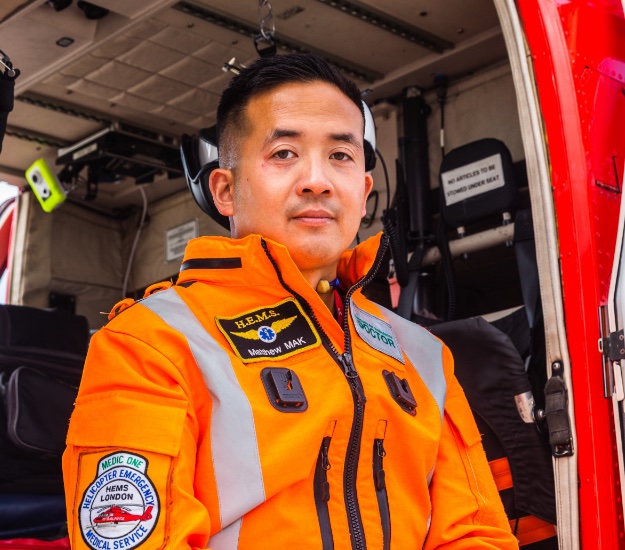Post
The London Air Ambulance is on a mission to save as many lives as possible
4 Jul 2023
Standing at the pinnacle of the highest helipad in Europe, almost as high as Big Ben, I’m with a group from The London Society, waiting for an air ambulance to land.
While we wait, the panorama of London is before us, arguably one of the best, uninterrupted views of the capital. Even though it’s a beautiful summer’s evening, the wind is swirling around us and can get up as high as 30 knots.
Join today and get priority booking here at The London Society
London’s Air Ambulance has been saving lives in London since 1989, and has been at some of the most horrific incidents in the capital. The unmistakable red helicopter that so many of us have seen flying overhead was present at the Grenfell fire disaster, the terror attacks at Westminster, and at Fishmongers’ Hall in London Bridge, where two people were fatally injured.
“We offer high level precision medical care on the site. The average flight time is six minutes and we should be with the patient within 15 minutes,” says Jonathan Jenkins, CEO of London’s Air Ambulance Charity. “We also teach medics to deal in real life situations. The paramedics don’t get told in advance what they are dealing with. There was one case with a critically injured young girl and the medics knew she was not going to survive.
“They offer some solace to the mum of the little girl who passed away. The medic told the mother: ‘She wasn’t in any pain and I was holding her hand.’” What an incredible gift.
This Behind the Scenes tour has been one of the hottest tickets on The London Society’s books for some time. So much so that members are entered into a lottery to secure a place. Don’t worry, if you want to witness this incredible life-saving service up close and personal, Jenkins is keen to do more tours.
This is because he is eager to get the message out that astonishingly, the London Air Ambulance is a registered charity. £15 million needs to be raised to replace their helicopters by 2024.
There are two MD902 Explorer helicopters, the G-EHMS and G-LNDN. This model was specially selected for its suitability in an urban environment. The pilots require an area of around 80 feet by 80 feet to land (about the size of a small tennis court).
In 2022 the advanced trauma doctors and paramedics treated 1,977 patients across London, travelling to scene either by helicopter or rapid response car.
The helicopter crew consists of a pilot and co-pilot, in addition to an advanced trauma doctor, paramedic and, on most missions, a consultant. They provide advanced trauma care outside of hospital, with general anaesthetics on scene, and carry blood on board to administer blood transfusion on the roadside.
Check out our rundown of upcoming events
From the top of the Royal London Hospital we watched the emergency medical team in their fire retardant suits, prepare for takeoff, ready to save more lives. The team look calm, an air of relaxed concentration. They break the tension with chat about which hospital provides the best biscuits. (It’s Battersea, apparently). The sound of the helicopter blades is deafening, the wind swirls and the air ambulance powers away into the distance.
The crew are ready for whatever situation they find themselves in. It could be a shooting, a stabbing or even perform open heart surgery. Some are bizarre accidents a person impaled on a deer in Richmond Park.
Heartbreaking stories like these happen almost every day to the London Air Ambulance crew. It’s a vital but harrowing job. As Jenkins says: “It’s the jobs that didn’t go well that eat them up.”


